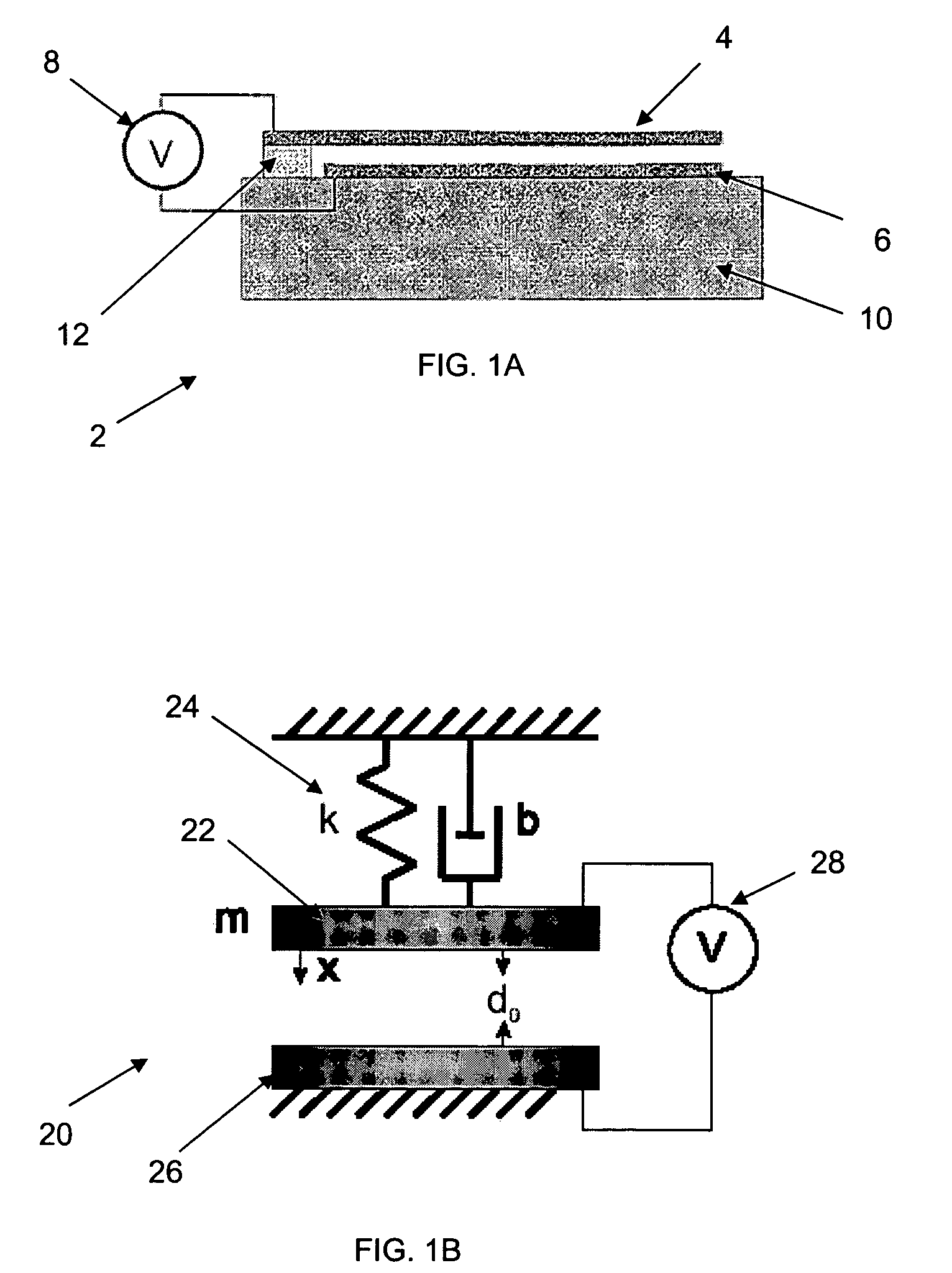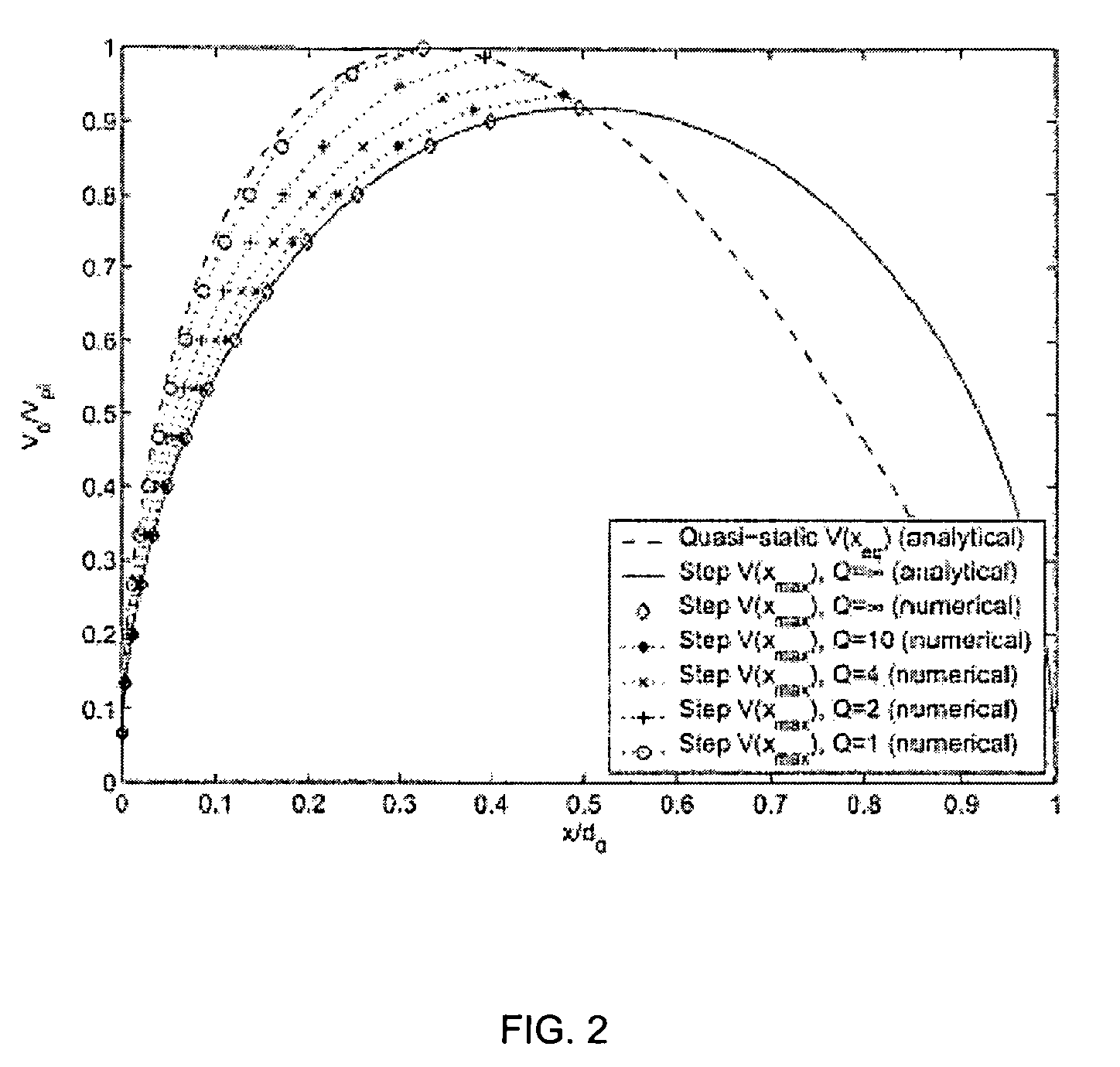Low-voltage micro-switch actuation technique
a micro-switch and low-voltage technology, applied in the direction of electromagnetic relays, electrostrictive/piezoelectric relays, electrical apparatus, etc., can solve the problems of not being significantly commercialized, the pull-in voltage can be different from what the quasi-static analysis shows, and the device has not yet become significantly commercialized
- Summary
- Abstract
- Description
- Claims
- Application Information
AI Technical Summary
Benefits of technology
Problems solved by technology
Method used
Image
Examples
Embodiment Construction
[0013]The invention involves a technique that will allow the operation of MEMS switches with a significantly lower voltage without decreasing the stiffness. The actuation time will become slower but with the reduction in voltage that is potentially possible, some of this speed can be recovered by making the structure stiffer. This will have the side benefit of making the switch more reliable by reducing the chance of failure by stiction.
[0014]The technique described herein uses a modulated actuation voltage rather than the standard DC actuation voltage. This increases the complexity of the drive circuitry but allows the elimination of the off-chip voltage upconverters that would otherwise be necessary.
[0015]Consider the geometry shown in FIG. 1A, which illustrates a cantilever beam implementation of a parallel electrode actuator 2. The parallel electrode actuator 2 includes a free electrode 4, a fixed electrode 6, a voltage source 8 that is applied between the fixed electrode 6 and ...
PUM
 Login to View More
Login to View More Abstract
Description
Claims
Application Information
 Login to View More
Login to View More - R&D
- Intellectual Property
- Life Sciences
- Materials
- Tech Scout
- Unparalleled Data Quality
- Higher Quality Content
- 60% Fewer Hallucinations
Browse by: Latest US Patents, China's latest patents, Technical Efficacy Thesaurus, Application Domain, Technology Topic, Popular Technical Reports.
© 2025 PatSnap. All rights reserved.Legal|Privacy policy|Modern Slavery Act Transparency Statement|Sitemap|About US| Contact US: help@patsnap.com



